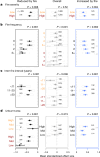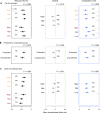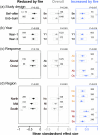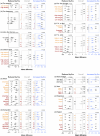Biodiversity impacts of the 2019-2020 Australian megafires
- PMID: 39537920
- PMCID: PMC11602714
- DOI: 10.1038/s41586-024-08174-6
Biodiversity impacts of the 2019-2020 Australian megafires
Abstract
With large wildfires becoming more frequent1,2, we must rapidly learn how megafires impact biodiversity to prioritize mitigation and improve policy. A key challenge is to discover how interactions among fire-regime components, drought and land tenure shape wildfire impacts. The globally unprecedented3,4 2019-2020 Australian megafires burnt more than 10 million hectares5, prompting major investment in biodiversity monitoring. Collated data include responses of more than 2,000 taxa, providing an unparalleled opportunity to quantify how megafires affect biodiversity. We reveal that the largest effects on plants and animals were in areas with frequent or recent past fires and within extensively burnt areas. Areas burnt at high severity, outside protected areas or under extreme drought also had larger effects. The effects included declines and increases after fire, with the largest responses in rainforests and by mammals. Our results implicate species interactions, dispersal and extent of in situ survival as mechanisms underlying fire responses. Building wildfire resilience into these ecosystems depends on reducing fire recurrence, including with rapid wildfire suppression in areas frequently burnt. Defending wet ecosystems, expanding protected areas and considering localized drought could also contribute. While these countermeasures can help mitigate the impacts of more frequent megafires, reversing anthropogenic climate change remains the urgent broad-scale solution.
© 2024. The Author(s).
Conflict of interest statement
Competing interests: The authors declare that some of them work for government agencies involved in forestry and implementing planned burns (Supplementary Table 8). The lead author declares that, despite the potential for government agencies to impose policy positions on staff communications (see ref. 51), scientific independence and integrity has been maintained throughout this project.
Figures











References
-
- Feng, X. et al. How deregulation, drought and increasing fire impact Amazonian biodiversity. Nature597, 516–521 (2021). - PubMed
-
- Kelly, L. T. et al. Fire and biodiversity in the Anthropocene. Science370, eabb0355 (2020). - PubMed
-
- Peterson, D. A. et al. Australia’s Black Summer pyrocumulonimbus super outbreak reveals potential for increasingly extreme stratospheric smoke events. npj Clim. Atmos. Sci.4, 38 (2021).
-
- Collins, L. et al. The 2019/2020 mega-fires exposed Australian ecosystems to an unprecedented extent of high-severity fire. Environ. Res. Lett.16, 044029 (2021).
-
- Penman, T. D., Clarke, H., Gibson, R. K., Collins, L. & Nolan, R. H. in Australia’s Megafires: Biodiversity Impacts and Lessons From 2019–2020 (eds Rumpff, L. et al.) 42–59 (CSIRO, 2023).
MeSH terms
LinkOut - more resources
Full Text Sources
Medical
Miscellaneous

